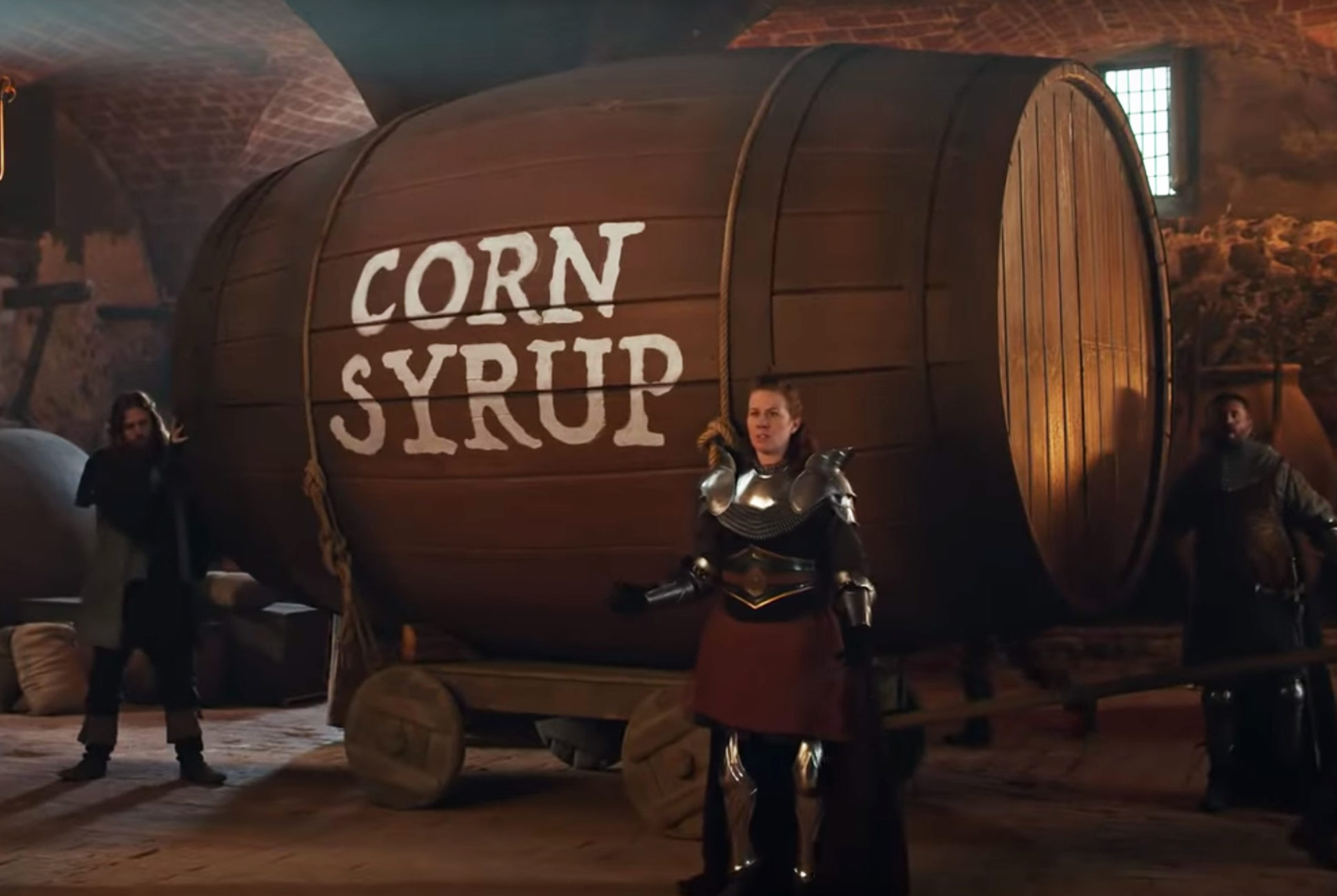Super Bowl LIII wasn’t much of a spectacle and, by now, most people have moved on. But there was one commercial that’s still being talked about: Bud Light’s corn syrup-based attack against its fiercest rival, MillerCoors.
The commercial, set in Bud Light’s medieval, “Dilly Dilly” universe, follows the king and his servants as they return a massive barrel labeled “corn syrup” to their competitors’ kingdoms. At each stop, they’re sure to point out that the brewers at the Coors Light and Miller Lite castles use corn syrup to brew beer. Conversely, the Bud Light castle opts for rice — though the fact is never overtly stated in the commercial.
The response was swift. On Twitter, the National Corn Growers Association voiced its disappointment, while MillerCoors took out a full-page ad in The New York Times. Some people hated the commercial. Some loved it. But no one was sure exactly what Bud Light was trying to say. Fact is, there isn’t much difference between beer brewed with rice and beer brewed with corn, ingredients commonly referred to as adjuncts. And that, it seems, was largely the point.
.@BudLight America’s corn farmers are disappointed in you. Our office is right down the road! We would love to discuss with you the many benefits of corn! Thanks @MillerLight and @CoorsLite for supporting our industry. https://t.co/6fIWtRdeeM
— National Corn (NCGA) (@NationalCorn) February 4, 2019
“Bud Light wasn’t trying to say that corn syrup doesn’t belong in beer,” said Alex Delany, associate editor at Bon Appétit. “The only real information you get from that commercial is that MillerCoors uses corn syrup, and Bud Light doesn’t. From a marketing perspective, it’s kind of genius.”
Through the commercial — and new, highly-visible nutrition labels on its packaging — Bud Light is playing on what Delany calls our “collective association” in regards to corn syrup and wellness, generally speaking. “It’s 2019. People know they aren’t supposed to drink corn syrup by the gallon or the teaspoon,” Delany said. “But the more people know, the less they actually think. If you only tell someone half of a story, knowing they possess enough knowledge to finish it, they’re going to finish it themselves.”

The story Bud Light wants us to finish is similar to the one started by Michael Pollan in his best-selling work The Omnivore’s Dilemma, a book that sparked many modern foodie trends while lampooning current food systems. But the health impact of the high fructose corn syrup used to sweeten your Big Gulp has little to do with the corn used as fermentable sugars in beer.
“It’s pretty silly, really, and it’s a reflection of the insecurity Big Beer is feeling these days,” said James Dugan, the owner and brewer at Great Notion Brewing Company, where his beers — some made with toasted rice and flaked maize — have gained a cult following. “There’s nothing wrong with using corn syrup. We may start making a beer with corn syrup… shout out to Bud Light for the inspiration!”
On the East Coast, craft brewers of all stripes are encroaching more directly on Big Beer’s playbook. At Transmitter in New York, Anthony Accardi uses corn in some of his farmhouse ales — which are far funkier than Bud Light — to lend a “subtler, grainy sweetness.”
And on shelves all over Boston is Night Shift Brewing’s Nite Lite, a craft light lager. “For a while, craft beer was all about the opposite of macro, including ingredient choices,” said Joe Mashburn, the head brewer at Night Shift. “I think it’s probably natural that at some point craft was going to double back on that and experiment with adjuncts, proving that not all adjuncts should be frowned upon.”
To be sure, Bud Light, which is owned by AB InBev, remains the largest beer brand in the US. But shipments of its products fell 6.7 percent in 2018, its largest annual percentage decline on record. And craft beer’s not the only enemy. Last year, the US Distilled Spirits Council reported its eighth consecutive year of growth.
The giant, wax-tipped elephant in the room is bourbon. By law, every bottle of the rapidly expanding spirit category is made with at least 51 percent corn. And the pride surrounding bourbon’s success is hard to miss anywhere near America’s corn belt. Bud Light isn’t making friends in Texas, Nebraska, Wisconsin, Iowa, South Dakota and North Dakota, six states which all rank among the top dozen states for both per capita beer consumption and corn production.
When AB InBev went for its closest competitor, it forgot where the real threats lie.

